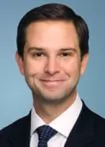- within Insolvency/Bankruptcy/Re-Structuring topic(s)
- with readers working within the Banking & Credit industries
On July 9, 2021, in Karth v. Keryx Biopharmaceuticals, Inc.,1 the U.S. Court of Appeals for the First Circuit affirmed entry of judgment for the defendants in a putative class action asserting violations of Section 10(b) of the Securities Exchange Act of 1934 based on a pharmaceutical company's alleged understatement of risks associated with its reliance on a single third-party manufacturer for the only drug it produced. In so ruling, the Court invoked a “Grand Canyon” metaphor for a company's obligation to describe risks as active or imminent, as opposed to theoretical: “one cannot tell a hiker that a mere ditch lies up ahead, if the speaker knows the hiker is actually approaching the precipice of the Grand Canyon.”2 In this case, however, the Court held that the defendant's risk disclosures—which stated that it “could experience a loss of revenue” if its supplier failed to perform—were not misleading, given the absence of a “widely-accepted certainty of failure” at the time. Rather, the situation was in theory “merely risky,” akin to approaching a “ditch,” but the risk had not matured to the point where it was active or imminent, i.e., the Grand Canyon.
Karth sets a high bar for claims of securities fraud based on allegedly inadequate disclosures regarding risks associated with uncertain future events, requiring identification of risks as active or imminent only when there is “near certainty” of “financial disaster” to the company. The decision also clarifies that, where a company describes risks associated with uncertain future events, “meaningful cautionary language,” containing “substantive” not “boilerplate” information, may insulate it from liability. While application of Karth inevitably will vary on a case-by-case basis, the decision stands as a win for Section 10(b) defendants and a step toward greater clarity on risk-disclosure standards.
Background
This case concerns Keryx Biopharmaceuticals, Inc., a Boston-based pharmaceuticals company that sold only one product, the drug Auryxia, used to treat chronic kidney disease. To produce the drug, Keryx relied on third-party contractors to carry out a two-step process: (1) producing the active pharmaceutical ingredient, and (2) converting the active ingredient into finished tablet form. Keryx used several contractors for step one of the process, but relied on a single source for step two—Norwich Pharmaceuticals, Inc. Keryx began selling Auryxia in December 2014, soon after receiving FDA approval.
The alleged fraud began on May 8, 2013, when Keryx filed a quarterly report with the SEC stating that it “rel[ied] on third parties to manufacture and analytically test our drug candidate,” and should those third parties fail, “our business may be harmed.” The company repeated similar disclosures over the next several years, even though it relied only on Norwich for step two of the production process. Over that time, Keryx also experienced intermittent production issues, including multiple instances in which Norwich identified contamination in the active ingredient. Further, a consultant advised the Keryx board of directors that the company's reliance on Norwich posed a risk of a “[s]upply disruption” and “[l]oss of credibility with customers.” Nevertheless, the company successfully met market demand for Auryxia over that period.
On February 26, 2016, Keryx modified its risk disclosures, issuing an annual report stating for the first time that it “depend[ed] on a single supply source for Auryxia drug product.” Similar to its earlier disclosures, the report warned that Keryx “could experience a loss of revenue” if the source failed to perform. Thereafter, Norwich identified additional contamination issues in the active ingredient. On April 28, 2016, Keryx issued a quarterly report repeating the same risk disclosure as in its prior report. At the same time, Keryx's CEO told investors that the company was “off to a good start” and had “established solid fundamentals for Auryxia.” Despite ongoing contamination issues, Keryx continued to meet market demand. On July 12, 2016, however, Norwich informed Keryx that it had observed a structural problem with some Auryxia tablets, leading it to halt production at one of its facilities. Unable to resolve the problem, Norwich halted production entirely later that month. As a result, on August 1, 2016, Keryx issued a press release withdrawing its prior financial projections and stating that a supply interruption was “imminent.” The value of Keryx stock then dropped by 36%.
Tim Karth had purchased Keryx stock on July 16, 2016. Following the August announcement, Karth filed a putative class action on behalf of Keryx investors in the District of Massachusetts, asserting violations of Sections 10(b) and 20(a) of the Securities Exchange Act and Rule 10b-5 thereunder. Karth conceded that the February and April disclosures pre-dating his purchase accurately stated that the company relied on a “single supply source.” Following discovery, however, Karth sought to file an amended complaint alleging that the disclosures nonetheless understated the risk from relying on Norwich in light of repeated (but at the time undisclosed) production issues. The defendants opposed Karth's request to amend and moved for judgment on the pleadings under Rule 12(c) of the Federal Rules of Civil Procedure, arguing that the February and April disclosures corrected any misapprehension investors may have had about the risks. The district court agreed, denying Karth leave to amend and entering judgment in favor of defendants.3 Karth appealed.
The First Circuit's Decision
To answer the operative question on appeal—whether the February and April disclosures were misleading in their failure to disclose past production problems—the First Circuit compared a company's duty to accurately disclose risks to a hiker's duty in describing approaching terrain to a hiking companion: “one cannot tell a hiker that a mere ditch lies up ahead, if the speaker knows the hiker is actually approaching the precipice of the Grand Canyon.”4 A company is “at the edge of the Grand Canyon” when a risk has a “near certainty” of causing “financial disaster” to it, and the company understands as much when it issues its disclosures.5 A company's understanding, moreover, may be evidenced by its “frenzied, underhanded efforts ‘to keep the house of cards standing,'” or where it is “‘desperate[ly]' working to ‘protect itself' from rapidly approaching harm.”6 Conversely, absent a “widely-accepted certainty of failure” or a “comprehensive cover-up,” a situation is “merely risky” (i.e., akin to a “ditch,” not the “Grand Canyon”); a company may describe it in “future” or “hypothetical” terms.7 That the risk may materialize later on is irrelevant: “fraud by hindsight” is not a valid legal theory.8
Applying this framework, the Court concluded, as a matter of law, that Keryx's February and April disclosures were not misleading. The plaintiff failed to plead that a supply interruption had “actually occurred,” nor that Keryx held a “widely-accepted certainty of failure,” at the time of the disclosures. Although Keryx had experienced sporadic production issues, none was so serious as to actually impair its ability to meet market demand. Further, Keryx issued “meaningful” disclosures alerting investors as to the nature and effect of the risk from relying on Norwich—it “could experience a loss of revenue”; no additional verbiage or detail was needed.9 It was not until July 2016, well after the disclosures, that the company realized the situation was becoming intractable, leading to a press release that a supply interruption was “imminent.” At that point, the situation went from “merely risky” (a “ditch”) to a “near certainty” of “financial disaster” (the “Grand Canyon”). Accordingly, the Court affirmed entry of judgment for defendants.
Implications
Karth sets a high bar for Section 10(b) claims based on a company's alleged failure to identify risks associated with uncertain future events as active or imminent, rather than hypothetical.10 It is widely recognized that “a company may be liable under Section 10(b) for misleading investors when it describes as hypothetical a risk that has already come to fruition.”11 Under Karth, however, that is only so when the risk is so great that it is akin to standing “at the edge of the Grand Canyon”12—i.e., there is a “near certainty” of “financial disaster,” and the company understands that to be the case.13 Notably, in granting judgment on the pleadings under Federal Rule 12(c), Karth demonstrates that a court may decide the matter based on plaintiff's allegations alone, despite the potentially fact-intensive nature of these questions.14
The decision also clarifies that, where future-oriented risk disclosures are at issue, a defendant may defeat a Section 10(b) claim if it provided “meaningful cautionary language.”15 The issue typically arises in the context of the safe-harbor provisions of the Private Securities Litigation Reform Act, which insulate defendants from liability for “forward-looking statement[s]” identified as such and “accompanied by meaningful cautionary statements identifying important factors that could cause actual results to differ materially from those in the forward-looking statement.”16 To qualify, “defendants must demonstrate that their cautionary language was not boilerplate and conveyed substantive information.”17 In Karth, the Court applied the concept to the adequacy of risk disclosures more broadly, holding that Keryx's disclosures sufficed because they “specifically identif[ied] the risk”—use of a “single supply source” could fail to produce enough Auryxia—and how it could adversely affect the company—“a loss of revenue.” No additional detail was needed, including regarding past production issues that never interfered with supply of Auryxia.
While Karth's standards may seem demanding, they are, in fact, consistent with how other circuits have evaluated risk disclosures associated with uncertain future events in recent cases. For example, in Williams v. Globus Medical, Inc., the Third Circuit affirmed dismissal of a Section 10(b) claim against a medical device company based on allegedly inadequate disclosures about the risk from discontinuing the use of third-party distributors.18 Because the plaintiff failed to allege an adverse impact on sales at the time, or that such an outcome was “inevitable” due to the risk, the Court deemed the company's risk disclosures regarding a possible, theoretical adverse impact sufficient.19 On the other hand, in In re Alphabet, Inc. Securities Litigation,20 the Ninth Circuit reinstated securities fraud claims against Google parent Alphabet, Inc. arising from the company's decision not to disclose a software glitch in its Google+ social network, which permitted third-party developers to collect user data. The Court found the company's risk disclosures (which omitted mention of the issue) misleading, in part because Google's legal and policy staff drafted an internal memo concluding that the issue could trigger media and regulatory interest, and senior executives allegedly were “vitally concerned” and “approved a cover-up” to avoid “regulatory scrutiny, public criticism, and loss of consumer confidence.”21 In other words, in the parlance of Karth, there was a “near certainty” of “financial disaster,” as well as a “comprehensive cover-up.”
Nevertheless, the Karth framework raises a number of questions, including under what circumstances a risk crosses the line from mere possibility to “near certainty,” and what degree of anticipated harm is sufficiently “disast[rous]” to require a detailed disclosure. Ultimately, the answers will depend on the facts and thus must be determined on a case-by-case basis. Still, Karth should serve as a valuable precedent for issuers, both prospectively and in defending litigation, and perhaps as a stepping-stone to greater clarity on applicable risk-disclosure standards.
Footnotes
1 -- F.4th --, 2021 WL 2882461 (1st Cir. July 9, 2021).
2 Id. at *9.
3 See Karth v. Keryx Biopharmaceuticals, Inc., 334 F.R.D. 7, 21 (D. Mass. 2019).
4 Karth, 2021 WL 2882461, at *9.
5 Id. (quoting Hill v. Gozani, 638 F.3d 40, 59-60 (1st Cir. 2011)).
6 Id. (quoting In re Cabletron Sys., Inc., 311 F.3d 11, 24 (1st Cir. 2002), and Tutor Perini Corp. v. Banc of Am. Sec. LLC, 842 F.3d 71, 88-91 (1st Cir. 2016)).
7 Id. at *10 (quoting Hill, 638 F.3d at 59).
8 Id. (quoting ACA Fin. Guar. Corp. v. Advest, Inc., 512 F.3d 46, 62 (1st Cir. 2008)).
9 Id. at *12.
10 The obligation to disclose risks in public filings derives from multiple sources, including Items 105 and 303 of Regulation S-K, as well as, more generally, the “ongoing duty to avoid rendering existing statements misleading by failing to disclose material facts.” Thesling v. Bioenvision, Inc., 374 F. App'x 141, 143 (2d Cir. 2010); see 17 C.F.R. § 229.105(a) (Item 105) (“Where appropriate, provide under the caption ‘Risk Factors' a discussion of the material factors that make an investment in the registrant or offering speculative or risky.”); 17 C.F.R. § 229.303(b)(2)(ii) (Item 303) (“Describe any known trends or uncertainties that have had or that are reasonably likely to have a material favorable or unfavorable impact on net sales or revenues or income from continuing operations.”).
11 Williams v. Globus Med., Inc., 869 F.3d 235, 242 (3d Cir. 2017); see also In re Harman Int'l Indus., Inc. Sec. Litig., 791 F.3d 90, 103 (D.C. Cir. 2015) (“[T]here is an important difference between warning that something ‘might' occur and that something ‘actually had' occurred.”) (citation omitted, emphasis in original); Berson v. Applied Signal Tech., Inc., 527 F.3d 982, 986 (9th Cir. 2008) (“The [disclosure] . . . speaks entirely of as-yet-unrealized risks and contingencies. Nothing alerts the reader that some of these risks may already have come to fruition, and that what the company refers to as backlog includes work that is substantially delayed and at serious risk of being cancelled altogether.”).
12 Karth, 2021 WL 2882461, at *9 (quoting Hill, 638 F.3d at 59-60).
13 Id. at *12.
14 “The standard for addressing a Rule 12(c) motion for judgment on the pleadings is the same as that for a Rule 12(b)(6) motion to dismiss for failure to state a claim.” Cleveland v. Caplaw Enters., 448 F.3d 518, 521 (2d Cir. 2006).
15 Karth, 2021 WL 2882461, at *12.
16 15 U.S.C. § 78u-5(c)(1)(A). The safe harbor “is designed to protect companies and their officials from suit when optimistic projections of growth in revenues and earnings are not borne out by events.” In re Quality Sys., Inc. Sec. Litig., 865 F.3d 1130, 1142 (9th Cir. 2017) (citation omitted). “[I]f a statement is accompanied by ‘meaningful cautionary language,' the defendants' state of mind is irrelevant.” Harris v. Ivax Corp., 182 F.3d 799, 803 (11th Cir. 1999) (quoting H.R. Conf. Rep. 104–369, at 44 (1995)).
17 In re Vivendi, S.A. Sec. Litig., 838 F.3d 223, 247 (2d Cir. 2016) (citation omitted).
18 Williams, 869 F.3d at 238.
19 Id. at 243.
20 1 F.4th 687 (9th Cir. 2021).
21 Id. at 706-07.
The content of this article is intended to provide a general guide to the subject matter. Specialist advice should be sought about your specific circumstances.
[View Source]




